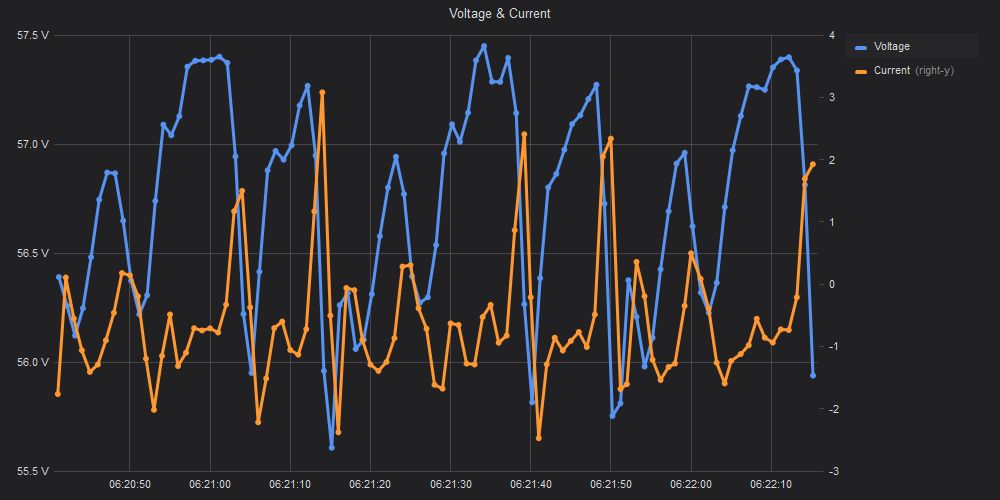Hi, I have a problem with keeping a consistent charge voltage when where there is a variation of load. It is not an issue of the load being too great, but of the MPPTs not responding quickly enough. The load is only about 20A (1kW) at peak and I have 2 MPPT150|35 connected with 2kW of solar behind each.
The charge voltage is set at 57.6V, but the battery voltage ranges between 57.5V and 55.6V when the load varies from about 5A to 20A. The chart is showing the battery current (-ve for charge), not the load current.
We have 2 MPPT150|35 chargers with plenty of solar behind them, so I would have expected that they could respond more quickly to maintain the battery voltage. The load changes constantly, so this means that the batteries aren't being properly charged. Is there a reason that the voltage control loop on the MPPT's is so slow? Is there anything that can be done to improve this?
